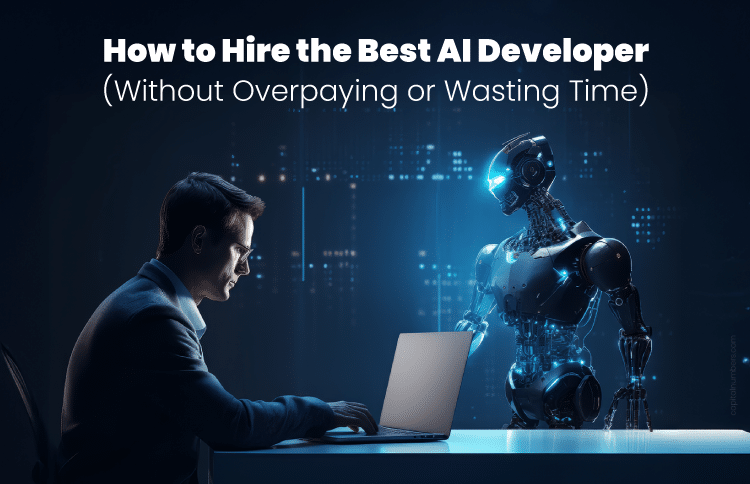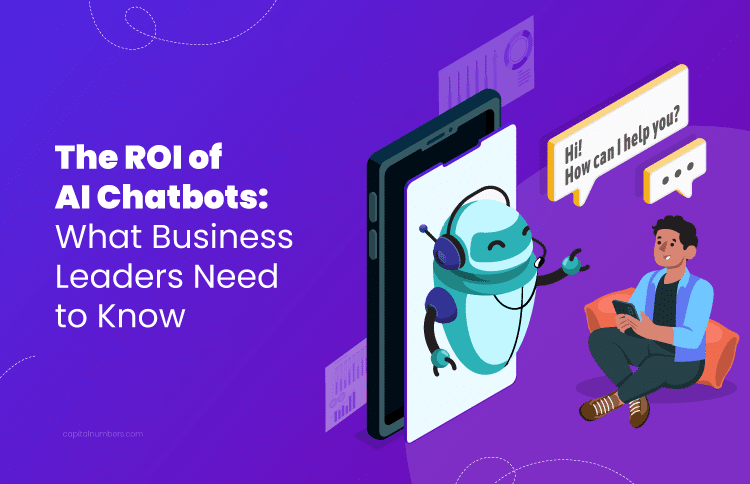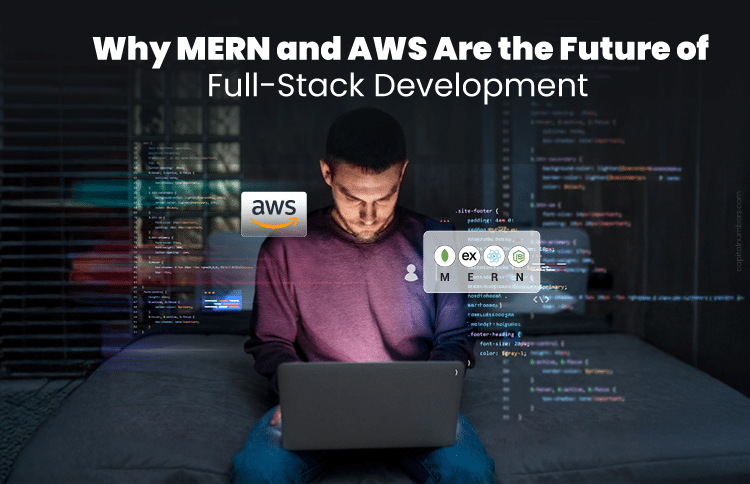MongoDB and Node.js: How Are They Changing the Future of App Development?
Table of Contents
In today’s rapidly evolving digital landscape, the demand for robust and scalable enterprise applications is growing rapidly. It’s a world where responsiveness, flexibility, and real-time capabilities are the keys to success. This is precisely where MongoDB and Node.js, a powerful combination of a NoSQL database and a versatile JavaScript runtime environment, come into play.
But why are these tech stacks used for building cutting-edge applications? Well, these technologies are not just tools; they are catalysts for change, empowering businesses to push the boundaries of what’s possible in terms of data management, real-time processing, and application scalability. From real-time collaboration platforms and geospatial services to AI-driven data processing and a host of other innovative solutions, we’re here to provide a comprehensive understanding of the transformative possibilities these technologies offer, especially when using Node.js for enterprise applications. Let’s dive in.
Why Do You Combine MongoDB with Node.js?
MongoDB, a NoSQL database, and Node.js, an open-source JavaScript runtime environment, form a great combination that is the backbone of many modern software applications. They team up to deliver top-notch performance, reliability, and scalability, making them a top-notch choice among developers and businesses.
MongoDB’s strength lies in its NoSQL architecture, which allows for flexible data storage and retrieval in a JSON-like format. It is helpful for projects that need to change and manage data quickly. With MongoDB, businesses can ensure their systems remain agile and responsive to evolving needs.
Node.js, on the other hand, excels in its event-driven, non-blocking design. This architecture makes it fast and suitable for managing multiple concurrent connections. For real-time applications and services, Node.js ensures swift and efficient data delivery.
Together, MongoDB and Node.js offer a developer-friendly, high-performance stack for building modern web applications, RESTful APIs, and microservices. The common use of JavaScript across the server and database simplifies development and reduces the need to switch between different languages or tools.
The practical benefits of this combo are evident in scaling applications, providing robust Node.js development services, and bringing innovative ideas to life. From e-commerce platforms to real-time collaboration tools, MongoDB and Node.js prove their versatility and adaptability.
Let’s discover how MongoDB and Node.js power creative apps. They help developers meet digital demands with cutting-edge solutions.
Understanding Real-time Collaborative Platforms
Real-time collaborative platforms represent a significant leap in how people collaborate and share information. The core idea revolves around instant interaction, where changes and updates one user makes are immediately reflected for others. These platforms leverage MongoDB’s robust data management capabilities and Node.js’s real-time data handling features to make such seamless collaboration possible.
What Drives It?
Real-time collaborative platforms rely on the powerful partnership of MongoDB and Node.js. MongoDB, a NoSQL database, excels at managing large datasets with agility and flexibility. It stores data in a schema-less, JSON-like format, making it a perfect choice for handling diverse and dynamic information. On the other hand, Node.js, an event-driven, non-blocking JavaScript runtime, is known for its speed and the ability to manage multiple connections concurrently, making it ideal for real-time interactions.
MongoDB’s data management and Node.js’s real-time features form a dynamic ecosystem for collaborative platforms. Users can edit documents, chat instantly, or play interactive games with real-time updates. This sets collaborative platforms apart from traditional sharing methods, offering a more engaging and productive experience.
Some Applications:
- Document Editing: Real-time collaborative platforms like Google Docs exemplify this application. However, companies can tailor such platforms to their needs, facilitating collaborative document creation and editing for teams.
- Chat Systems: Instant messaging services that deliver messages almost immediately after you hit the send button are a prime example of real-time collaboration. These systems provide seamless communication, enabling teams to stay connected and make decisions rapidly.
- Interactive Gaming: Multiplayer online games use real-time collaboration to create immersive gaming experiences. Actions by one player have immediate consequences for others, fostering an engaging and interactive gaming environment.
How to Build One?
If you’re considering the development of a real-time collaborative platform or looking to hire a Node.js developer for such a project, there are key skills to consider. Considering only the Node.js frameworks they are proficient at is not enough. Your Node.js developer should have experience with WebSockets, a crucial technology for real-time communication. They should also be familiar with MongoDB’s data replication features, which ensure data consistency and reliability in collaborative settings.
Real-time collaborative platforms represent a significant advancement in how people work together, share information, and interact. Their ability to provide instantaneous updates and interactions is made possible through the dynamic combination of MongoDB’s data management capabilities and Node.js’s real-time data handling features. Whether in document editing, instant messaging, or online gaming, these platforms offer an engaging and productive experience, transforming how teams collaborate and communicate in the digital age.
Geospatial Services: Transforming Location-Based Apps
Understanding Geospatial Services
Geospatial services power location-based apps that help you find the nearest gas station or coffee shop. The fusion of MongoDB’s geospatial indexing and Node.js’s speed and adaptability simplifies building interactive location-based services. MongoDB efficiently stores and retrieves location data, while Node.js handles multiple connections, making these services responsive and user-friendly.
Core Applications:
- Vehicle Tracking: Looking for business fleet management or family car sharing? Geospatial services provide efficient vehicle tracking and routing.
- Weather Forecasting: Real-time, location-specific weather updates prepare you for changing conditions.
- Local Search and Discovery: Like Yelp, these services offer hyper-local recommendations for restaurants, services, and events, enhancing exploration and discovery.
Building Your Own:
To venture into this technology, ensure your Node.js developer is proficient in GeoJSON, used for encoding geographic data structures, and understands MongoDB’s $geoNear operator for efficient geospatial queries. These skills are essential for accurate and reliable geospatial services.
In summary, geospatial services, powered by MongoDB and Node.js, underpin location-based applications. Their integration simplifies the creation of interactive and responsive services for vehicle tracking, weather forecasting, and local recommendations. If you plan to explore this technology, ensure your Node.js developer possesses the necessary skills for a successful geospatial application.
AI-Powered Data Processing
The Magic Behind It:
In a data-rich world, AI-powered data processing stands out as the solution for managing and extracting insights from massive datasets. MongoDB’s ability to handle large datasets and Node.js’s capacity to manage non-blocking I/O operations make them an ideal combination for AI-driven tasks.
MongoDB, a versatile NoSQL database, is great for storing and retrieving data in AI apps. Node.js, a speedy JavaScript runtime, is excellent at handling multiple tasks at once. Together, they create a powerful team for fast and efficient data processing and analysis.
Popular Applications
- Customer Behavior Analysis: AI-powered data processing allows businesses to predict and understand customer behavior, often before customers realize their preferences. This capability is fascinating and invaluable for tailoring products and services to individual needs.
- Automated Support Systems: Smart chatbots powered by AI can engage in human-like conversations, providing real-time assistance and support to users. These bots can handle complex queries and guide users efficiently.
- Predictive Maintenance: In industrial settings, AI-driven systems can predict when machinery requires maintenance, minimizing downtime and reducing operational costs. This form of proactive maintenance is not only efficient but also incredibly polite in its notifications.
What to Look for When You Hire Developers
If AI-powered data processing aligns with your needs, you’ll want to hire Node.js developers with specific skills. Look for expertise in machine learning algorithms. Additionally, familiarity with MongoDB’s aggregation pipeline is essential for efficient data analysis and transformation.
In summary, AI-powered data processing, with MongoDB and Node.js at its core, addresses the challenges large datasets pose. Their combined strengths create a dynamic environment for efficient data analysis and utilization. From customer behavior analysis to automated support systems and predictive maintenance, the applications are diverse and game-changing. To make the most of this technology, ensure your Node.js developer possesses the necessary skills in machine learning algorithms and MongoDB’s aggregation pipeline.
Wrapping Up
That was a lot, wasn’t it? But we’ve only scratched the surface. If you’re looking for Node.js development services that can build these innovative applications, make sure your potential hires have the skills we’ve talked about.
To be on the safe side, you can opt for an award-winning software development company like Capital Numbers. Equipped with the top 1% of Indian developers, we offer innovative and cost-effective web application development services. Irrespective of your project needs, we will exceed your expectations. Want to talk to us? Call us today!

















